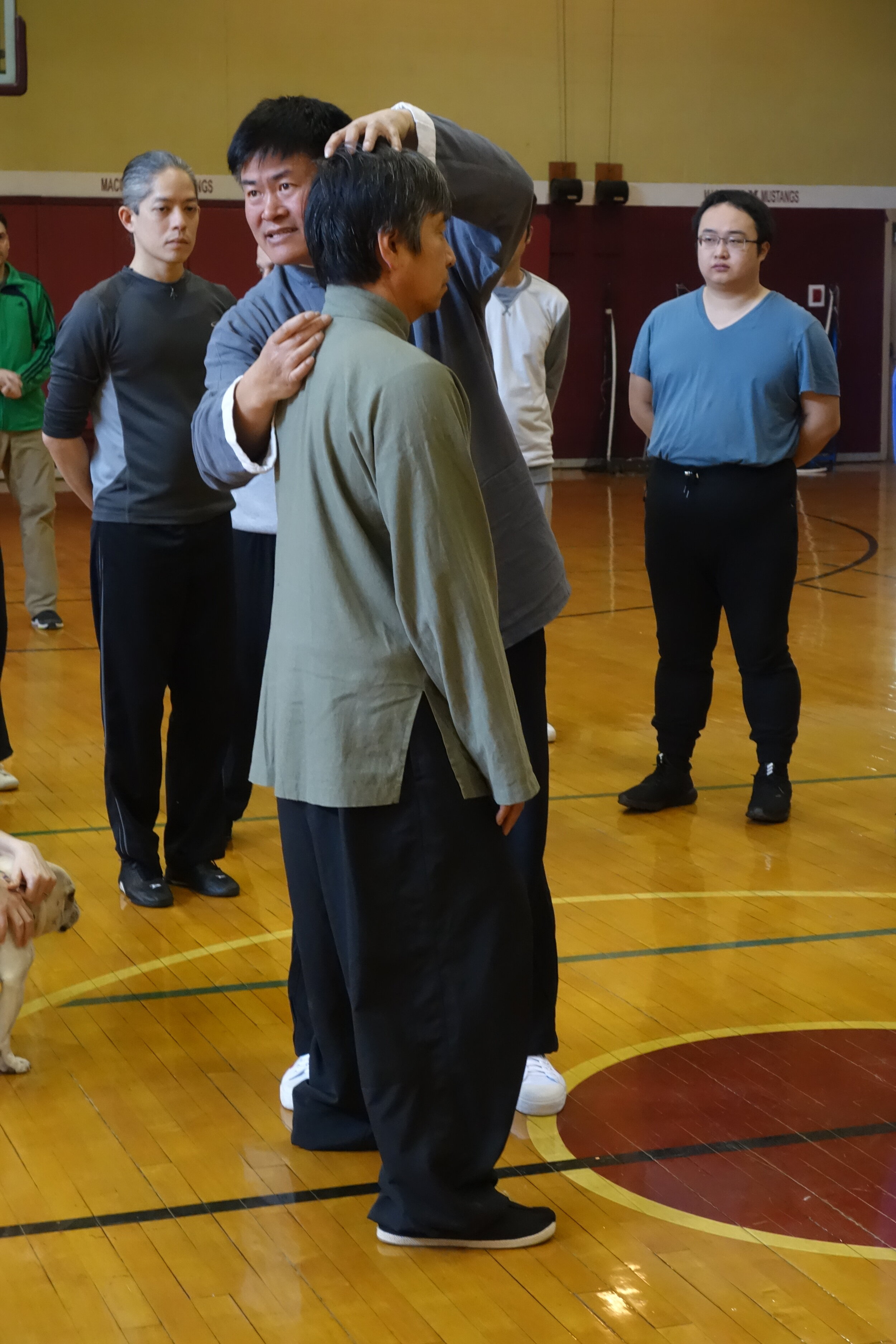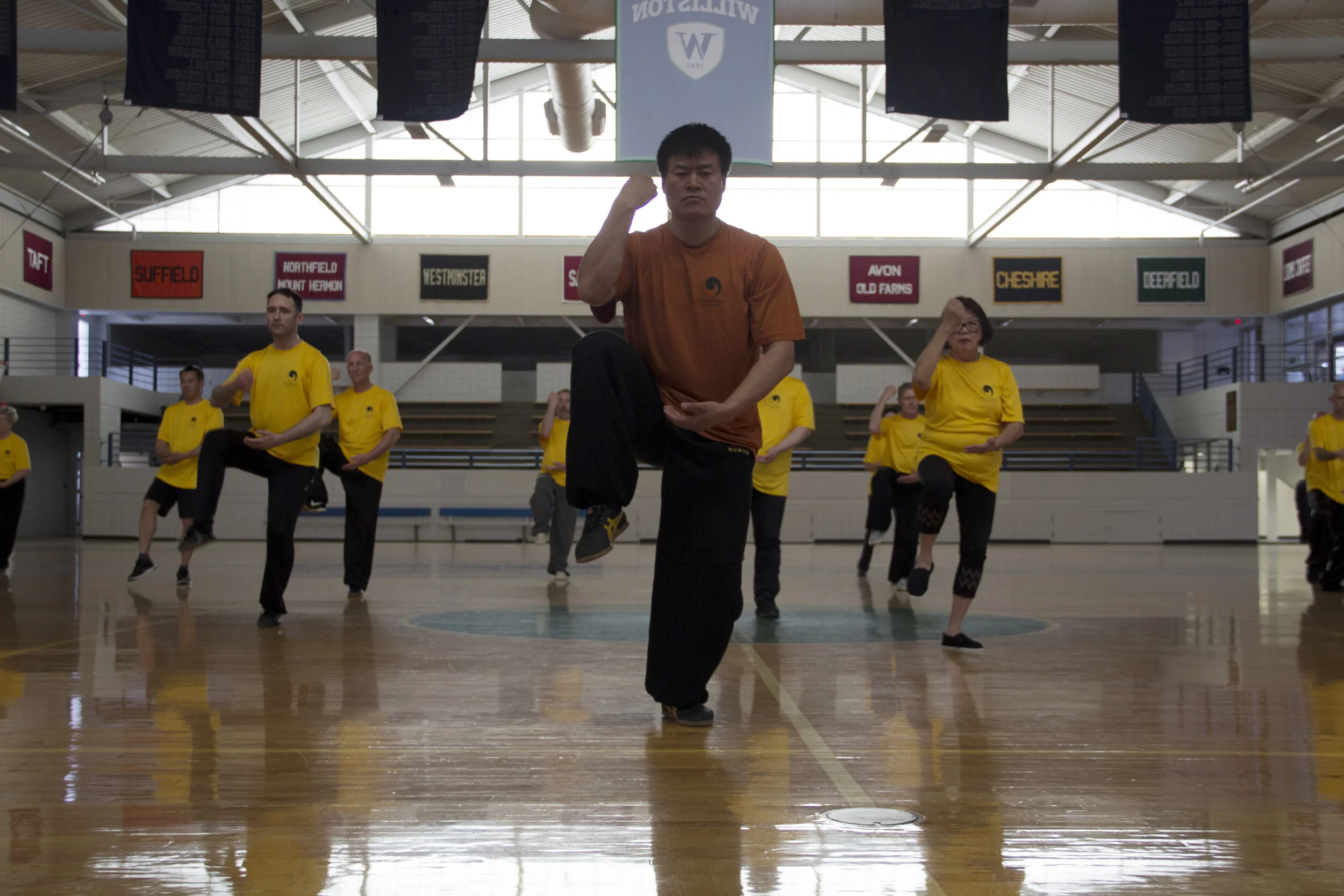The Leg Comes From the Mud
Qi shi is the beginning posture in taijiquan. To start the form the person stands arms at side, looking forward, with feet together. The arms hang naturally and the head also is natural with the eyes looking forward. To step left, first the knees bend slightly and the hips relax as the weight of the body sinks downward and as the tail bone drops and the waist drops. The left foot will rise slightly and take a half-step to the left. As this leg is lifted from the floor/the earth the leg should feel as if it is being pulled from the mud. The leg moves gently and smoothly and should feel as if there is a thick goo that the foot is releasing from deep in the earth. Feel the heaviness of the earth pulling the leg as the body lifts the leg and moves it to the side.
Later on as the right leg lifts in Jin Gang Dao Dui, Pounding the Mortar, this leg too feels as if it is being pulled from the mud. As the right leg drops in this form it remains heavy and the stomp executed at the end of the form is a dropping, not a stomping. One should be able to hear the drop of the foot as a heavy resounding that comes from the energy of the waist and the hip.




